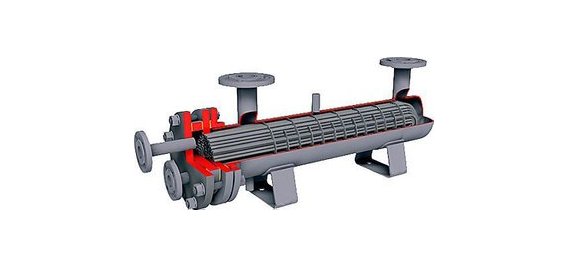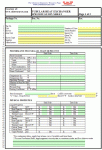Chemical and Process Engineering Resources

Completing the TEMA Specification Sheet
The TEMA specification sheet shown below has been color coded to help explain which information should be provided by the specifying engineer and which information should be provided by the designer/manufacturer. Green cells are to be completed by the specifying engineer, yellow cells by the designer/manufacturer, and gray cells could be completed by either party.
The information on the first page of the specification is essentially a description of the problem as has been covered herein. On the second page, the specifying engineer is asked to indicate the design pressure and temperature. The test pressure is generally accepted as 1.3 times the design pressure as specified by the latest version of the ASME Pressure Vessel code. Some times, however, the specifying engineer may request a higher design pressure (perhaps 1.5 times design pressure). The engineer is also expected to specify materials or choices of materials for the heads, shell, tube sheets, tubes, and the compression gaskets (if applicable).
The specifying engineer can also indicate any required corrosion allowances required as well as any special mechanical or non-destructive testing that may be required for an exchanger to be installed in a particular duty.
If the installation of the exchanger would be simplified by a particular nozzle arrangement or maximum overall length, this type of information can be provided in the sketch box or in the remarks section. Use the remarks section to convey any other pertinent information to the designer.
 |  | |
| Figure 9: TEMA Specification Sheet, Page 1 | Figure 10: TEMA Specifiation Sheet, Page 2 |
Conclusions
Specifying a liquid-liquid heat exchanger is not always as easy as it may appear. But an engineer who examines the problem carefully and prepares an accurate, yet flexible, specification will find the entire process much easier. Thinking about all aspects of the heat exchanger to be installed can also help avoid problems in the future or surprises during the installation of the equipment.
 FB
FB


1 Comments
what happens if temperature cross occurs in heat exchanger?